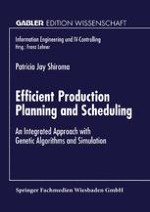1996 | Buch
Efficient Production Planning and Scheduling
An Integrated Approach with Genetic Algorithms and Simulation
verfasst von: Patricia Jay Shiroma
Verlag: Deutscher Universitätsverlag
Buchreihe : Information Engineering und IV-Controlling
Enthalten in: Professional Book Archive
